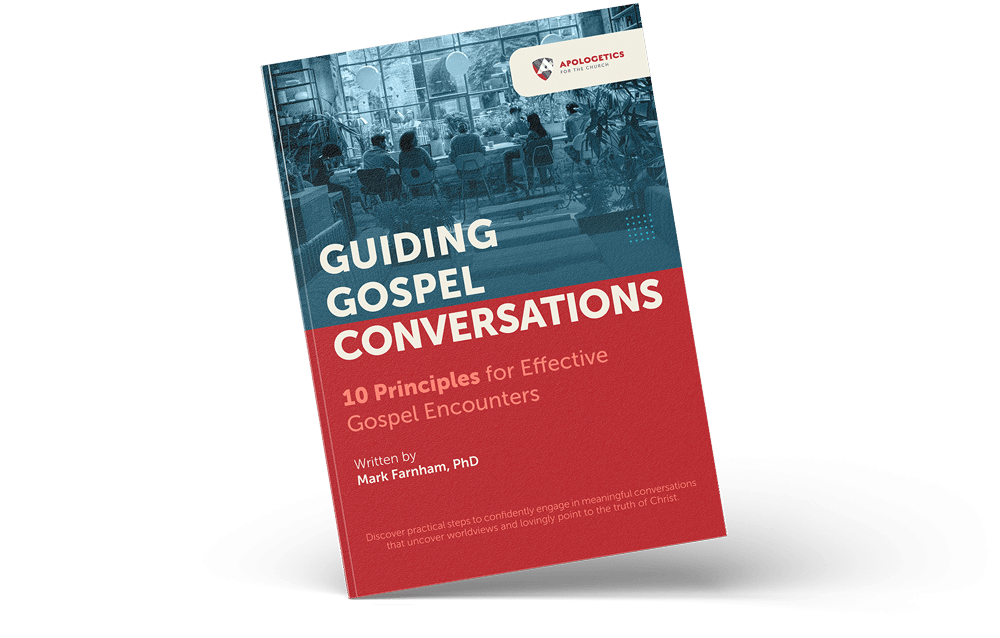Download The Free Guide
Discover practical conversation skills to get unbelievers thinking and make way for the Spirit’s work in their lives.
"*" indicates required fields
In the last two years, few issues in biblical studies have been discussed more than the question of the historicity of Adam and Eve. More and more high profile evangelical scholars have made what would have been an unthinkable pronouncement just a few years ago—that Adam and Eve were probably not, or in some cases, definitely not genuine historical figures. Almost all the scholars who have surrendered to the tenets of higher criticism have done so because some “evidence” in science or history was found to be more convincing than the clear words of Genesis 1-3.
The problems with this popular theological shift are myriad. The focus of this post, however, is on the historical pedigree of the heresy that is introduced by well-meaning Christians who try to do exactly what the Gnostics did in the early church. Bruce Shelley describes the gnostic practice of disentangling the gospel from its involvement with “barbaric and outmoded” Jewish notions about God and history (Church History in Plain Language, 52). That is, Gnostics sought to separate the message of Jesus from the historic event of his incarnation, death and resurrection. In doing so they serve as a warning to all who “try to raise Christianity from the level of faith to a higher realm of intelligent knowledge and so increase its attractiveness to important people.”
Shelley explains:
In his effort to reconcile Christ and the gospel with the science and philosophy of the day, the gnostic denied the event and lost the gospel. Just as nineteenth-century defenders of the faith tried to present Jesus Christ in terms of evolution, so the gnostic interpreted the Savior in light of the fascinating ideas of the enlightened men of his day. But the attempt to tie the gospel to the latest theories of men is self-defeating. Nothing is as fleeting in history as the latest theories that flourish among the enlightened, and nothing can be more quickly dismissed by later generations (p. 52).
If the “evidence” of science and history is allowed to rule out the historicity of Adam based on the genre of Genesis 1-3, or the supposed incompatibility of the Genesis account with reigning scientific paradigms, why not apply the same criteria to the miracles of Jesus or his resurrection? Scholars who are denying the historical Adam are increasingly telling us that one has to be an expert in the Ancient Near East (ANE) to understand the Old Testament and in Second Temple Judaism (STJ) to understand the New Testament. Such scholars have become the new high priests who serve as intermediaries between the text of Scripture and the common man.
The relatively new fields of ANE and STJ (only a century or so old) allow a few “qualified” individuals to feel that they alone can interpret the milieu of Scripture for the rest of us. We are told to simply trust them, despite the weight of church history and the perspicuity of Scripture. Almost invariably these scholars over time find less and less in Scripture to be historically accurate or scientifically verifiable. The trajectory is almost always away from belief in the historicity of biblical events and people. What these scholars perceive to be the rescue of the faith from literalistic readings of Scripture is actually the wholesale undermining of any confidence in God’s Word.
The accommodation of higher criticism by evangelicals is ultimately nothing more than a new Gnosticism that privileges a few experts, and will finally eviscerate the faith of many. The historicity of Adam may not seem like a major issue to some, but I believe it is foundational to the reliability of Scripture, and indicative of the sort of doctrines that need to be retained purely on the testimony of Scripture, regardless of what science or history “prove.”
by Jeffrey Mindler, Research Assistant “Therefore take up the whole armor of God, that you may be able to withstand in the evil day, and having done all, to...
by Jeff Mindler, Research Assistant “For the wrath of God is revealed from heaven against all ungodliness and unrighteousness of men, who by their...
When defending the faith against unbelievers, we want to strike at the heart of the unbelieving system of thought. We want to identify the main source of...